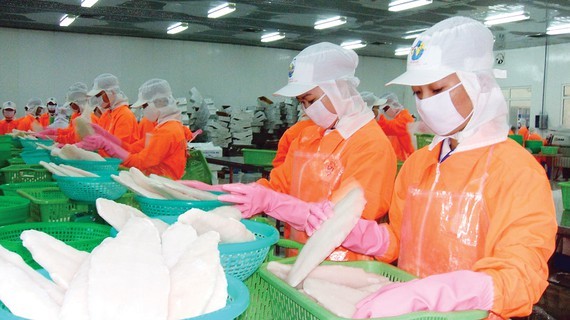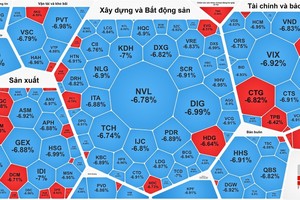
Mr. Tran Thanh Hai, deputy head of the Department of Import and Export under the Ministry of Industry and Trade, said that in the first eight months of this year, export turnover of agricultural and aquatic products of Vietnam merely reached US$16.6 billion, a decrease of 7.2 percent over the same period last year. In the export structure of agricultural and aquatic product group, China, the most important market, has posted significant slowdown in the past months. It is because since mid-2018 to now, China has increased origin traceability and tightened control on plant and animal quarantine and the quality of imported agricultural and aquatic products. Besides declining demand in some products, increasing technical barriers has partly affected the progress of export of agricultural and aquatic products of Vietnam to Chinese market.
According to Mrs. Bui Thi Thanh Tam, CEO of the Vietnam Northern Food Corporation (Vinafood 1), Vietnam’s rice export to China dropped as China strengthened control on quarantine and food safety. At the present, rice inventory of China is extremely high. Earlier, it was a rice importing country but now it has become a rice exporter.
‘With the current situation, China might become the fifth largest rice exporter in the world. Chinese government has been increasing investment in agriculture, restructuring its economy and carrying out investment in agriculture in Cambodia and Myanmar so the demand to import rice declines,’ said Mrs. Tam.
However, according to Mr. Tran Thanh Hai, Vietnam should not miss opportunities from this market as with a population of more than 1.4 billion people, accounting for 18.7 percent of total population in the world, the demand to import agricultural and aquatic products of China for domestic consumption and processing of export products is still fairly high and diverse. China’s 32 provinces and cities all have different needs for each specific product. For years, China has been the largest export market of Vietnam, accounting for an average of 27 percent of total agricultural and aquatic product exports of the country and 30 percent of total exports of Vietnam to this market.
The advantage is that Vietnam and China signed the ASEAN-China Free Trade Agreement, which took effect since 2010, with import tariffs reducing to zero percent for 8,000 types of products. If meeting well requirements for origin traceability, quarantine and food safety, China’s market still has lots of room for Vietnamese agricultural products.
Speaking at the conference, Minister of Industry and Trade Tran Tuan Anh said that China is currently the largest partner of Vietnam in economic field, trade and investment. However, exporting agricultural and aquatic products of Vietnam to China needs right orientation and solutions to resolve entanglements so as to ensure the harmony in the bilateral relationship.
He said that export of agricultural and aquatic products of Vietnam to China still mainly relies on border trade and Vietnamese products have not entered deeply into inland China. Agricultural and aquatic products have not met technical barriers and have not established a stable production and consumption chain.
Minister of Agriculture and Rural Development Nguyen Xuan Cuong said that China has changed its trade form from various import-export forms to only one form, official import-export, as of June 1 this year. This is a legitimate change as people anywhere also have demand for higher quality of imported products. China also changed administrative authority. Earlier, several departments participated in administration but now there is only the General Administration of Customs of China. China has also been promoting economic restructuring, focusing on agriculture and reviving agriculture. Therefore, several key agricultural products of Vietnam have seen declines in export turnover and faced several difficulties.
‘If we cannot identify these changes, export efficiency will be extremely low,’ Mr. Cuong emphasized.
According to Minister Tran Tuan Anh, at this time, Vietnam cannot delay anymore as China will set up more and more barriers and high requirements on product quality, food safety, origin traceability, and brand building. He said that Chinese market will still have high demand for key products of Vietnam, including rice, rubber, seafood and processed agricultural products through official trade. He affirmed that the Ministry of Industry and Trade and the Ministry of Agriculture and Rural Development together with other ministries, departments, associations, enterprises and provinces will cooperate, discuss and work more carefully, from report to reality, in order to collate policies and relating requirements, hereby building sustainable import-export strategy, creating stable market for agriculture.
























